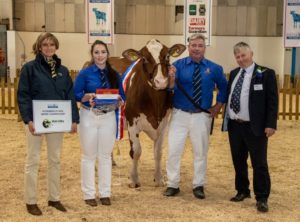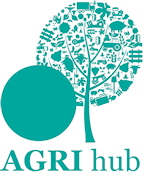 Dairy farmers were in high spirits at the Dairy Show on Wednesday, with more than 6,000 visitors turning out to exhibit their cattle and discover the latest technology to improve efficiencies in the years ahead.
Dairy farmers were in high spirits at the Dairy Show on Wednesday, with more than 6,000 visitors turning out to exhibit their cattle and discover the latest technology to improve efficiencies in the years ahead.
With more stands than ever before, there was plenty of cutting-edge equipment on offer, alongside the latest research and advice to boost cow health, welfare and productivity.
Speaking in the busy seminar theatre, Duncan Forbes, dairy research director at Kingshay, explained how producers could use technology to free up labour and improve decision making.
“Technological innovation is accelerating and growing; agri-tech is key to achieving more production with less impact,” he said. With the global population growing, farmers would have to produce 60-70% more food by 2050, while also reducing their environmental impact – and technology could help them to achieve both those targets, he added.
The Dairy EPI Centre, located adjacent to the Bath & West Showground in Somerset, is trialling a wide range of technology which could be rolled out across the industry, explained Mr Forbes.
For example, the fabric roof lets in more light and reduces costs, while robotic milking and feeding machines are improving milk and feed efficiencies.
Automatic wall curtains, linked to environmental sensors, ensure the housing is optimal for cow comfort, with smart cow collars monitoring activity and rumination and offering an early indication of sickness.
The centre is also using drones to measure grass availability, dry matter, energy and protein content, helping to plan rotational grazing to maximise feed efficiencies, said Mr Forbes. “If we need to be buffer feeding we can make sure it’s totally complementary to the grass the cows are eating on that day.”
Taking automatic monitoring to the next level is a 3D camera which records the cows’ body condition, mobility score and weight every time they pass underneath it.
“If you automate measurements and artificial intelligence turns the data into actions, that frees up your time and enhances your stockmanship,” added Mr Forbes. “It also makes the industry an exciting place for workers, attracting new blood, which is always important.”
As part of the Show’s drive to celebrate the brightest and best new entrants to the sector, the Dairy Industry Vet of the Future competition saw Sophie Wilson crowned as champion among some tight competition. “The standard of the projects submitted was outstanding,” said Mike Steele from sponsor Micron Bio-Systems.
Miss Wilson did her research project at the University of Nottingham on the pathogenesis of claw horn disease, and is now working in general farm practice at NorCal Vets in Oxfordshire. “I’m thrilled to win – it’s a real honour,” she said.
In other competition, it was the cattle themselves that won the ribbons, with the three-year old Ayrshire heifer Allstar Triclo Joybell scooping the coveted interbreed championship as well as the interbreed pairs alongside her herdmate Sandyford Provider Fragrance.
Sired by Sandyford Triclo, this beautiful heifer calved in February and is producing 38kg of milk a day. She won interbreed heifer at the Royal Welsh Show and was reserve interbreed at UK Dairy Day, with a trip to Agriscot likely to complete the year.
“Last time we came to the Dairy Show was in 2013 and we won the supreme championship then,” said owner Blaise Tomlinson, who milks 230 cows near Loughborough, Leicestershire. “Joybell is a big animal but she’s very easy to work with and she’s got real style, which is something you can’t breed for.”
In the reserve spot was the Llewellin Family’s senior Jersey cow, Riverside Tequila Hazelnut, sired by Tower Vue Prime Tequila. “She won at the National Jersey Show here in 2017 and was reserve interbreed – and she’s done the same again this year; always the bridesmaid,” said Nia Llewellin. Having calved in June, she is giving 35kg and celebrated her sixth birthday at the show.
“She’s a useful, balanced and true dairy cow,” said Ben Llewellin. “She’s gained time with every single calf – always calving within 12 months.” The family milk 250 Holsteins and 12 Jerseys in Pembrokeshire and plan to head to Agriscot and the Welsh Dairy Show next.
Show organiser Alan Lyons said the atmosphere at the event was very upbeat, despite the uncertainties of Brexit. “Dairy farmers are positive about embracing the future, and I hope that, with the breadth of technology and advice on offer, they went home feeling empowered to do so.”
- The Dairy Show was held on 2 October at the Bath & West Showground. For more information visit bathandwest.com.




